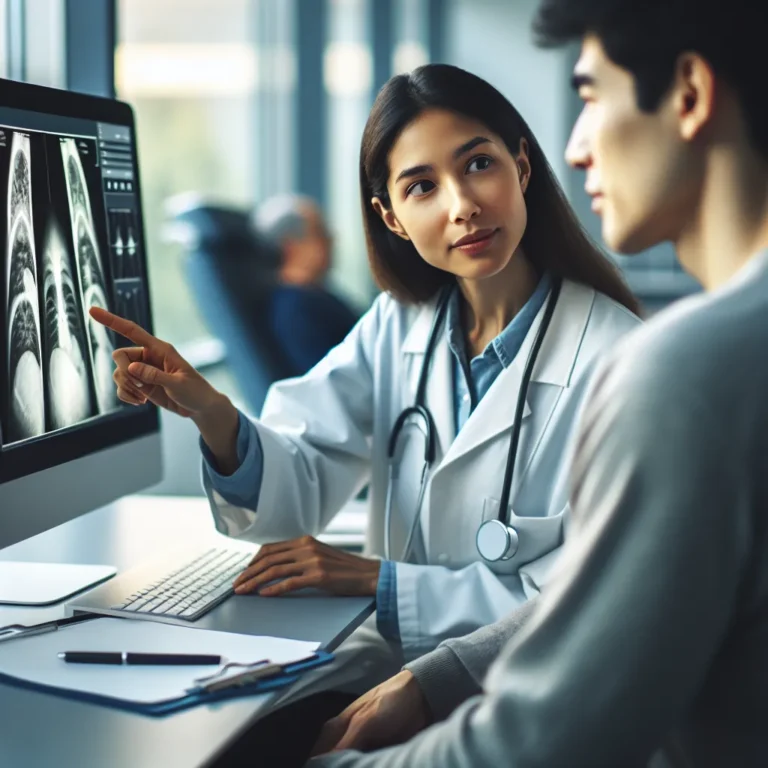
The article "Understanding the Role of Data Analysis in Decision Making" delves into the pivotal role of data analysis in enabling organizations to gain insights from their data, informing strategic decisions and driving growth. It emphasizes the importance of utilizing advanced analytical tools to identify patterns, correlations, and outliers within datasets, enabling proactive decision-making and mitigating risks. The second article, "Harnessing the Potential of Big Data for Business Growth," accentuates the transformative impact of Big Data while underscoring the necessity of effective data analysis in extracting valuable insights. It elucidates the ability to gain a competitive edge through personalized marketing and enhanced customer experiences. The final article, "The Art of Extracting Actionable Insights from Data," underscores the significance of not just collecting data but also the art of extracting actionable insights from it. Overall, the articles collectively emphasize the critical role of data analysis in enabling organizations to stay competitive, achieve sustainable growth, and make informed decisions, making them essential reads for those seeking to harness the power of data.

The article "The Ethical Implications of Mass Surveillance: Balancing Security and Privacy" delves into the intricate ethical challenges posed by mass surveillance, highlighting the delicate balance between security and privacy. It emphasizes the arguments from proponents advocating for the imperative role of surveillance in national security while also acknowledging and addressing the concerns of privacy rights infringement and the potential abuse of surveillance systems. The need to navigate this ethical minefield is underscored by the tension between security and privacy, as well as the issues of consent, transparency, and accountability. The article calls for a critical evaluation of the necessity, proportionality, and oversight of surveillance measures, emphasizing the importance of robust legal frameworks and transparent processes to uphold ethical norms and individual rights. Furthermore, the accompanying piece, "The Challenges of Ethical Decision-Making in an Era of Mass Surveillance," highlights the growing ethical dilemmas arising from the rapid advancement of surveillance technologies, emphasizing the need for ethical frameworks to navigate this evolving landscape of surveillance. The article prompts readers to consider the ethical implications and challenges as technology continues to progress, urging proactive addressing of these considerations to mitigate the risks of mass surveillance while upholding ethical principles.

The article "Leveraging Machine Learning for Anomaly Detection in Cybersecurity" delves into the increasing complexity of cybersecurity and the emergence of machine learning as a powerful tool for identifying and addressing evolving cyber threats. It highlights the capabilities of machine learning algorithms in analyzing data, recognizing patterns, and adapting to new and unseen threats in real time, while acknowledging the challenges in accuracy, reliability, and interpretability. The integration of machine learning into cybersecurity practices is presented as a proactive and adaptable defense against a wide array of threats. Similarly, "The Role of Behavioral Analytics in Enhancing Network Security" emphasizes the crucial role of behavioral analytics in identifying anomalous behavior within a network to proactively reduce the risk of security breaches. It discusses the establishment of baselines for normal behavior, the detection of insider threats, and the insights provided for enhancing overall network security, underlining the paramount importance of behavioral analytics in empowering organizations to detect and respond to potential security threats. These articles provide valuable insights into leveraging advanced technologies to bolster cybersecurity defenses and are essential reads for anyone interested in staying ahead of cyber threats.

The birth of technical climbing in the 1950s and 1960s marked a significant turning point in the sport, with climbers venturing into more challenging and complex routes that emphasized delicate footwork, intricate handholds, and the use of specialized equipment such as nuts and cams for protection. Pioneers like Royal Robbins, Warren Harding, and Yvon Chouinard were instrumental in pioneering these technical routes, setting the stage for a new era of climbing. This shift in mindset not only revolutionized the way routes were approached but also led to advancements in equipment and protection systems, making it safer and more feasible to attempt once unthinkable climbs. The evolution of technical climbing, coupled with innovations in climbing equipment, has paved the way for a new breed of climbers to explore the vertical world, shaping the sport into what it is today. If you are interested in learning about the pioneers of free climbing and the significant role played by innovations in climbing equipment, this article provides a comprehensive overview that delves into the evolution of technical routes in climbing.

The article emphasizes the crucial role of financial analysis in making well-informed investment decisions, providing valuable insights into the financial health and performance of companies through the examination of financial statements, ratios, and other indicators. It stresses the importance of assessing profitability, solvency, and stability, as well as predicting future financial performance and identifying trends to gauge growth prospects and sustainability. Furthermore, the article highlights how a thorough understanding of financial analysis empowers investors to mitigate risks, optimize their investment portfolios, and align their choices with specific financial goals and risk tolerance levels. It also discusses how incorporating financial analysis into investment approaches can maximize returns by providing essential information, evaluating financial positions and performance, identifying market trends, and staying informed about economic indicators. This comprehensive approach is presented as essential for achieving long-term investment success and ultimately maximizing returns on investments.

The article "The Ethics of Concealed Surveillance in Academic Studies" delves into the ethical considerations surrounding covert observation in research, emphasizing the potential violation of privacy and autonomy. It highlights the ethical concerns of privacy infringement and the impact on the autonomy of individuals under observation, and it stresses the importance of assessing potential harm and ensuring the fair distribution of benefits and burdens. Furthermore, the piece underlines the necessity for a clear ethical framework to prioritize the rights and well-being of the individuals under study. "Exploring the Moral Dilemmas of Covert Observation in Research" further emphasizes the ethical tensions between obtaining authentic data and respecting individuals' rights, stressing the need for careful consideration of potential harm and benefits, and the crucial role of ethical review boards in evaluating the moral implications. Both articles invite readers to critically examine the ethical complexities of covert observation in academic studies and the importance of upholding ethical standards.

Machine learning applications have fundamentally transformed disease diagnosis by analyzing complex medical data to detect patterns and make accurate predictions, ultimately leading to the early detection of diseases like cancer, diabetes, and cardiovascular conditions. These applications have the ability to process vast datasets from diverse sources, enabling the identification of subtle anomalies in medical images and continuous improvement in diagnostic accuracy. Moreover, the integration of machine learning with wearable devices and remote monitoring systems allows for real-time health tracking and early symptom recognition, propelling healthcare towards preventive and personalized medicine. Furthermore, advancements in detection techniques through machine learning have significantly improved the accuracy and efficiency of disease detection, including the analysis of medical imaging and clinical data, ultimately offering hope for improved prognosis and better management of various medical conditions.

The article introduces the concept of unobtrusive observation, highlighting its significance in covert research as a means to gather data without impacting the natural behavior of subjects. It emphasizes the benefits of this approach in accessing authentic information, particularly in sensitive topics, while allowing for longitudinal studies and examination of naturally occurring phenomena. Furthermore, it explores various types of unobtrusive research methods, such as content analysis, archival research, and non-reactive research, detailing how they enable data collection without direct interference. In addition, it delves into the ethical considerations inherent in covert research, emphasizing the importance of respecting participants' rights and well-being. This comprehensive overview outlines the ethical and effective conduct of unobtrusive observation, making it essential reading for researchers across disciplines.

The article explores the implementation of AI-powered surveillance systems to enhance urban security, emphasizing the benefits of real-time monitoring, behavioral pattern recognition, and anomaly detection. It highlights the efficiency and proactive nature of these systems in identifying security threats and unauthorized activities, ultimately leading to quicker responses and crime prevention. Additionally, the article discusses the adaptive learning capability of AI-powered surveillance systems, reducing false alarms and optimizing security resource allocation. Another aspect is the cost-effectiveness of these systems, contributing to the creation of safer urban spaces. The second part of the article focuses on the role of IoT in revolutionizing urban security through real-time monitoring, predictive maintenance, and predictive security models, emphasizing the interconnected nature of IoT devices in facilitating a coordinated response to security incidents. Overall, the article provides a comprehensive overview of how AI and IoT are reshaping urban security, making it a compelling read for those interested in innovative solutions for safeguarding urban environments.

The article delves into the ethical complexities of covert operations, underscoring the moral dilemmas arising from the secretive and controversial nature of such activities. It highlights the need to carefully weigh potential consequences against the perceived necessity of these operations, emphasizing the ethical considerations at play, including implications on legal, moral, and political grounds. The delicate balance between operational secrecy and ethical imperatives of transparency poses a formidable challenge in the realm of covert operations, with a keen focus on accountability, oversight, and preventing potential abuse of power. The potential consequences on innocent bystanders, geopolitical stability, and diplomatic relations also demand meticulous consideration, requiring an acute awareness of the far-reaching and unintended ramifications of covert operations. The article navigates these complexities, urging a nuanced and conscientious approach to decision-making in the realm of covert operations, ultimately emphasizing the need for a thorough understanding of the moral dilemmas and ethical considerations at hand.









